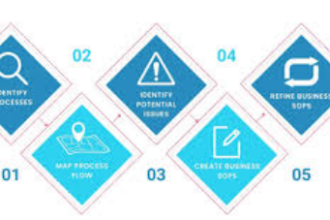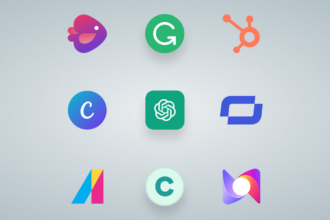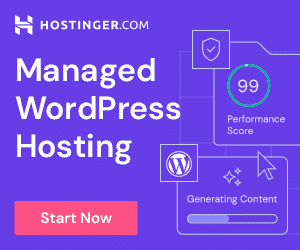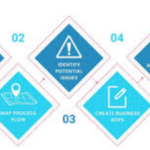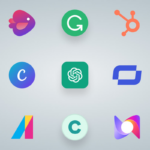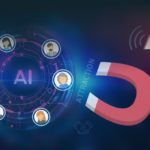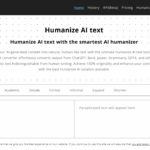In this article, I will discuss the Which Programming Language is Best for the Future. Striking a balance between career progress, a successfully executed project, and remaining relevant in a significantly shifting technology landscape makes the choice of the programming language pivotal.
Given the vast landscape, understanding the demand, applicability, and future value of these languages equips developers to make educated choices and cultivate skills that will be seen as beneficial in 2025 and later.
What is Programming Language?
A programming language serves as an orderly collection of word symbols that permits interaction between humans and computers to develop software, applications, or websites. It offers a methodical mechanism to translate into written code which a computer can process.

From Python, which is more oriented towards beginners, to C++ which is faster and more complex, programming languages differ in their use, syntax, and even their complexity. In today’s world focusing heavily on technology and gadgets, programming languages are incredibly useful as they assist in solving problems, automating processes, and developing technology.
Factors to Consider When Choosing a Programming Language
Here are the considerations you look at when choosing a programming language:
Job Market Demand: Choose languages that are in high demand to increase career opportunities.
Community Support: A strong community ensures better resources, libraries, and troubleshooting help.
Ease of Learning: Consider languages that match your skill level and learning curve.
Versatility: Some languages are applicable to web, mobile, AI, or desktop applications.
Performance: Depending on your project, speed and efficiency may be crucial.
Future Growth: Opt for languages with long-term relevance and emerging industry trends.
Compatibility: Check how well the language works with existing tools and technologies.
Top Programming Languages for the Future in 2025
1.Python
Python is anticipated to remain one of the most relevant programming languages in the future as it is simple to use, adaptable, and extensively employed in several industries. It holds particular prominence in web development, data science, AI, and machine learning, and will continue to be relevant in 2025 and further.
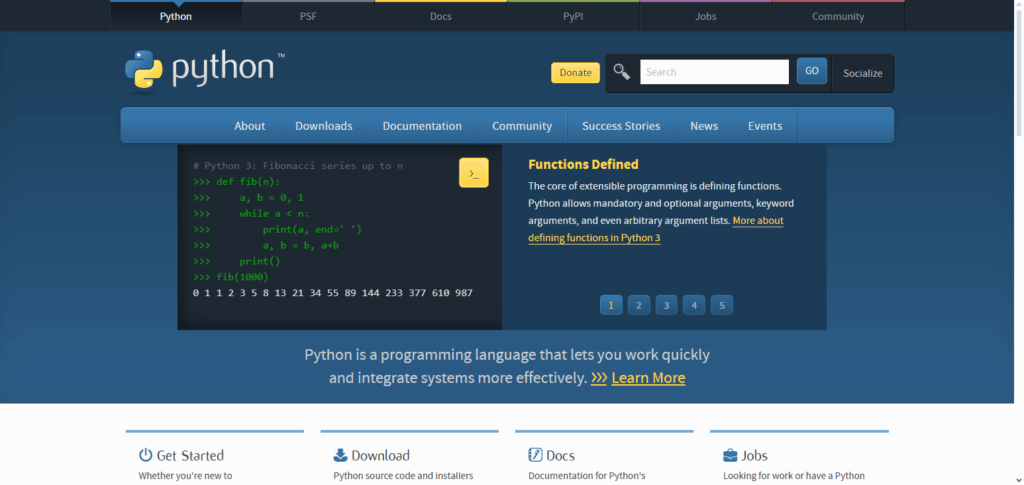
Python’s numerous libraries, frameworks, and its community’s rich ecosystem ensure faster and more effective problem-solving. Because of its simple syntax and ease of use, it is ideal for novices, and thus will retain its position as one of the most sought after languages for career progression and to work on advanced technologies.
2.Rust
Rust is gaining prominence as a leading programming language of the future due to its emphasis on performance, memory safety, and concurrent programming. Unlike many programming languages, Rust offers system-level programming and high-performance applications as memory leaks and data races are mitigated at compile time—their occurrence is prevented.
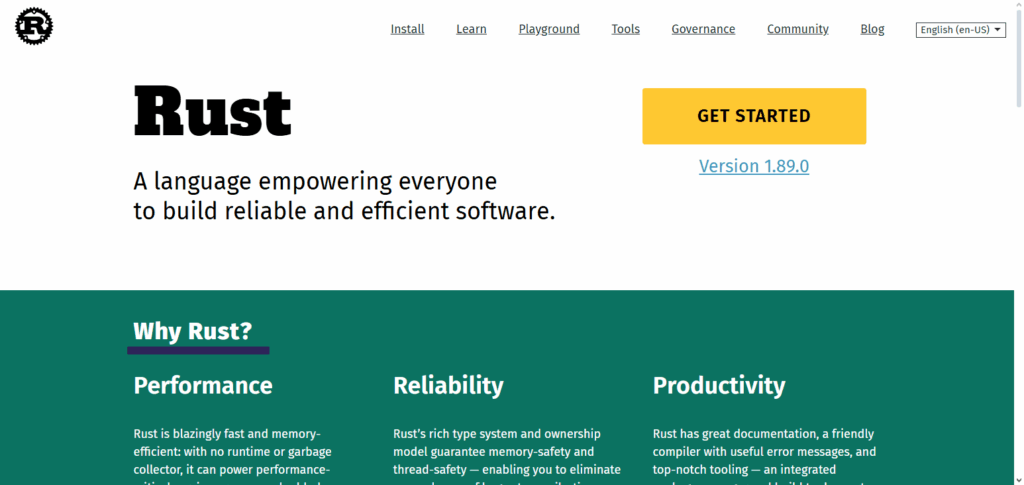
Its increasing adoption in blockchain, game development, and cloud infrastructure showcases its versatility. Rust is becoming a prominent language in the tech world due to its expanding community, growing industry support, and the unique dependability and innovation that it provides.
3.Kotlin
Kotlin stands out as one of the best programming languages for the future because of its modern Android-centric syntax, its interoperability with Java, and its growing adoption in the Android ecosystem. Kotlin aids in reducing the workload of programmers because of its clear and well-structured code that is simpler to read and write, resulting in fewer mistakes and increased efficiency.
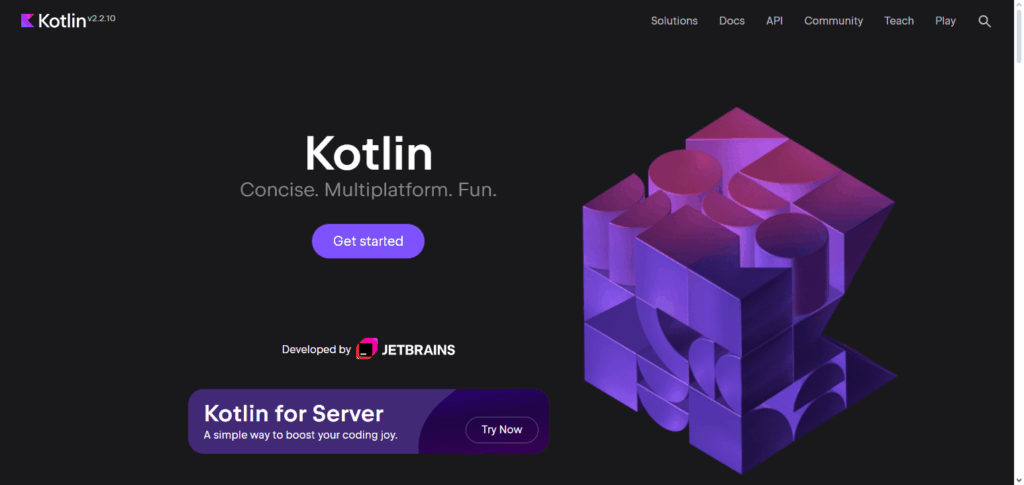
Kotlin is the best choice for businesses because it seamlessly integrates with Java projects and also supports cross-platform development with Kotlin Multiplatform. Its adoption in mobile applications, backend systems, and new technologies makes Kotlin a language looking towards the future with ample career opportunities in 2025 and further.
4.TypeScript
TypeScript is one of the leading programming languages for the future, as it augments JavaScript with strong typing which enhances the reliability and maintainability of large-scale web applications. TypeScript’s early error detection aids in better code quality and helps in reducing the number of bugs within the application.
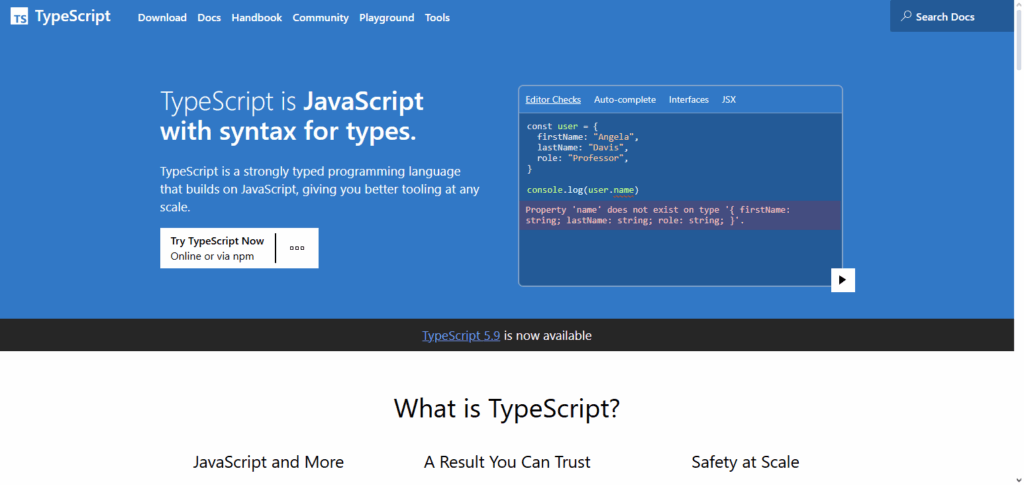
TypeScript’s compatibility with modern frameworks such as Angular, React, and Vue make it ideal for scalable frontend and backend projects, and its growing popularity with enterprises and startups alike ensures it will continue to be one of the primary languages for building robust web applications for the future.
5.Swift
Swift is one of the leading programming languages of the future because it is Apple’s ecosystem tailored for swift’s design which is safe and fast. An Apple developer can create iOS, macOS, watchOS, and tvOS applications with higher effectiveness than done in the past and does not require a lot of coding mistakes.
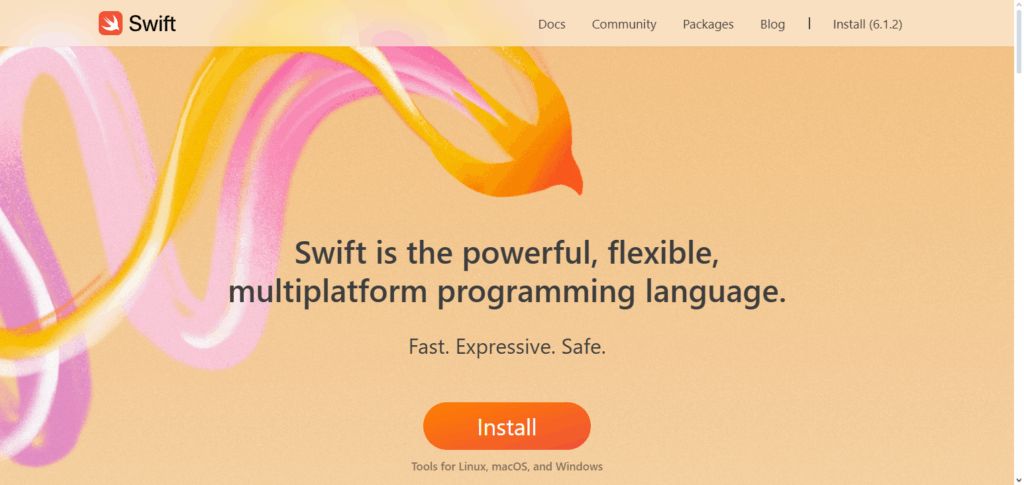
Swift is especially easy to understand and use because it has a clean syntax, offers many optimizations for performance, and has a strong community. Swift will remain relevant and in demand as Apple devices continue to dominate the market, and thus, will make software and mobile development easy and effective.
Emerging Languages to Watch
Here are a few new programming languages to follow as they develop further:
Julia: Julia is gaining popularity for performing high-level analytical tasks in data science, machine learning, and scientific research, as it is designed to perform high-speed and scalable computations.
Dart: Supported by Google, Dart is used with the Flutter framework that allows the development of mobile, web, and desktop applications and their seamless integration through a single code base.
Crystal: Best known for integrating the ease of ruby with a c-like performance, crystal is perfect for the swift and efficient development of back-end systems.
Elixir: Known for being easily maintainable, scalable, and robust in core infrastructure applications, Elixir is gaining popularity for real-time and distributed systems applications.
Nim: Focused on high performance, ease of use, and multi-platform accessibility, nim is a lightweight compiled programming language that is slowly gaining recognition with system and application programmers.
Risk & Considerations
Market Share Reduction
Opportunities for certain programming languages and languages may become increasingly difficult to find.
High Initial Effort
For novices struggling to grasp the basic concepts of the languages, resource-intensive relearning may be required.
Insufficient Community Help
Advanced troubleshooting can be severely hampered as a result of having a small number of frameworks, libraries, and other related materials to draw from.
Resource Efficiency Constraints
For certain applications, resource-intensive programming languages may be ill-suited.
Interoperability Issues
Working with the systems or technologies that are already in place may be difficult.
Technological Developments
The progression that some technologies undergo in leaps and bounds may, in the near future, render a set of languages obsolete.
Pros & Cons
| Pros | Cons |
|---|---|
| High demand languages offer strong career opportunities | Some languages may lose popularity over time |
| Versatile languages can be used across multiple domains | Steep learning curves can slow beginners |
| Large community support ensures resources and troubleshooting help | Limited community or libraries can hinder development |
| Future-proof languages align with industry trends and emerging tech | Compatibility issues with existing systems may arise |
| Performance-optimized languages improve efficiency and speed | Some languages may not suit all project types |
Conclusion
To conclude, best programming language selection for the future hinges on one’s professional pathways, project requirements, and sector developments. Python, Rust, Kotlin, TypeScript, and Swift offer strong industry recognition, adaptability, community backing, and relevance to upcoming advancements.
For mobile programming, Kotlin and Swift command the industry, while Rust offers unmatched performance and safety for Python’s stronghold in AI data science. Developers can best safeguard their competencies and remain competitive in 2025 and beyond by harnessing the innovative, demanding, and scalable languages.
FAQ
Which programming language is easiest to learn for beginners?
Python is widely considered the easiest due to its simple syntax, readability, and beginner-friendly community support.
Which language has the highest demand in 2025?
Python, JavaScript, and TypeScript are expected to remain highly in demand across web development, AI, and data science industries.
Can I learn multiple languages at once?
Yes, but it’s recommended to master one language first before branching out to ensure strong foundational skills.

